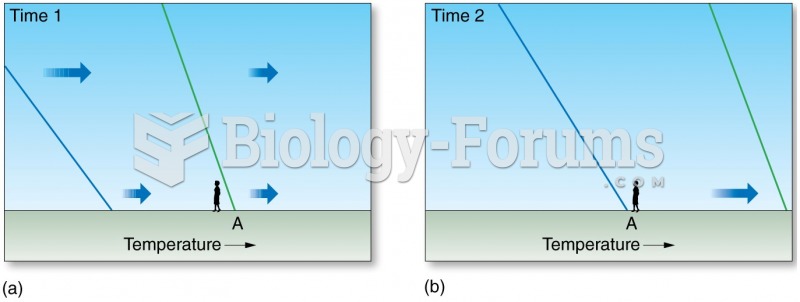|
|
|
When intravenous medications are involved in adverse drug events, their harmful effects may occur more rapidly, and be more severe than errors with oral medications. This is due to the direct administration into the bloodstream.
Blood in the urine can be a sign of a kidney stone, glomerulonephritis, or other kidney problems.
Many people have small pouches in their colons that bulge outward through weak spots. Each pouch is called a diverticulum. About 10% of Americans older than age 40 years have diverticulosis, which, when the pouches become infected or inflamed, is called diverticulitis. The main cause of diverticular disease is a low-fiber diet.
For high blood pressure (hypertension), a new class of drug, called a vasopeptidase blocker (inhibitor), has been developed. It decreases blood pressure by simultaneously dilating the peripheral arteries and increasing the body's loss of salt.
It is difficult to obtain enough calcium without consuming milk or other dairy foods.







![Tiësto - Back Around (feat. AR/CO) [Official Audio]](https://biology-forums.com/gallery/47/medium_6_16_08_23_11_56_10.jpg)